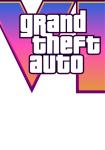Justice Visheshwar Nath Khare, the senior most judge of the Supreme Court, was on Thursday sworn-in as the Chief Justice of India by President A P J Abdul Kalam.
Justice Khare succeeds Justice G B Pattanaik, who retired on Thursday after a short tenure of one and half months as CJI.
The new CJI, the 33rd, will have a tenure of nearly one and half years and is due to retire on May 2, 2004. Incidentally, Justice Khare is the fourth Chief Justice to be sworn-in this year. The other three were Justice S P Bharucha, Justice B N Kirpal and Justice G B Pattanaik.
Kalam administered the oath of office to Justice Khare at a brief ceremony in the impressive Ashoka Hall in the presence of Vice-President B S Shekhawat, Prime Minister Atal Bihari Vajpayee, Deputy Prime Minister Lal Kishenchand Advani, Speaker Manohar Joshi, Law Minister Jana Krishnamurthi and other cabinet ministers.
The swearing-in ceremony of Justice Khare, whose wife witnessed it from a wheel-chair, was also attended by former
chief justices of India, judges of the Supreme Court and Delhi high court, Attorney General Soli J Sorabjee, Solicitor
General Kirit N Raval and other senior advocates.
Born on May 2, 1939, Justice Khare enrolled as an advocate at the Allahabad high court on November 28, 1961 and practiced mainly on civil, writ and revenue issues. He went on to serve as the Chief Standing Counsel for the Uttar Pradesh government in the high court.
Justice Khare was appointed as a permanent judge of the Allahabad high court on June 25, 1983. He took over as chief justice of the Calcutta high court on February 2, 1996.
After a brief tenure of just over one year, Justice Khare was appointed as a Judge of the Supreme Court on March 21, 1997.
Recently, on behalf of a five-member constitution bench, Justice Khare had written the opinion on the Presidential Reference on the Gujarat issue holding that finalisation of the dates of an election fell exclusively within the domain of the Election Commission and even Parliament could not interfere in that.
He was also part of the 11-judge constitution bench that gave a ruling on the administration and management of Minority Educational Institutions.






 © 2025
© 2025